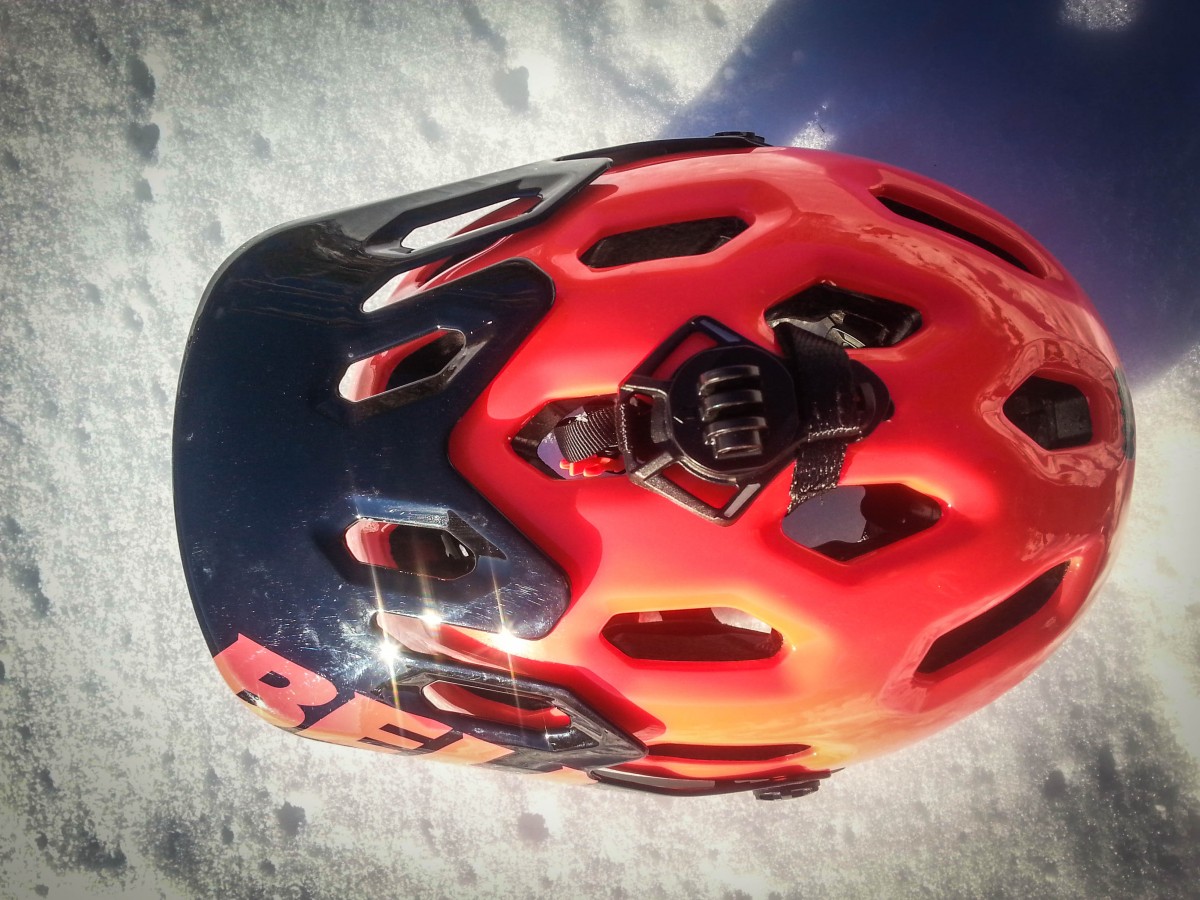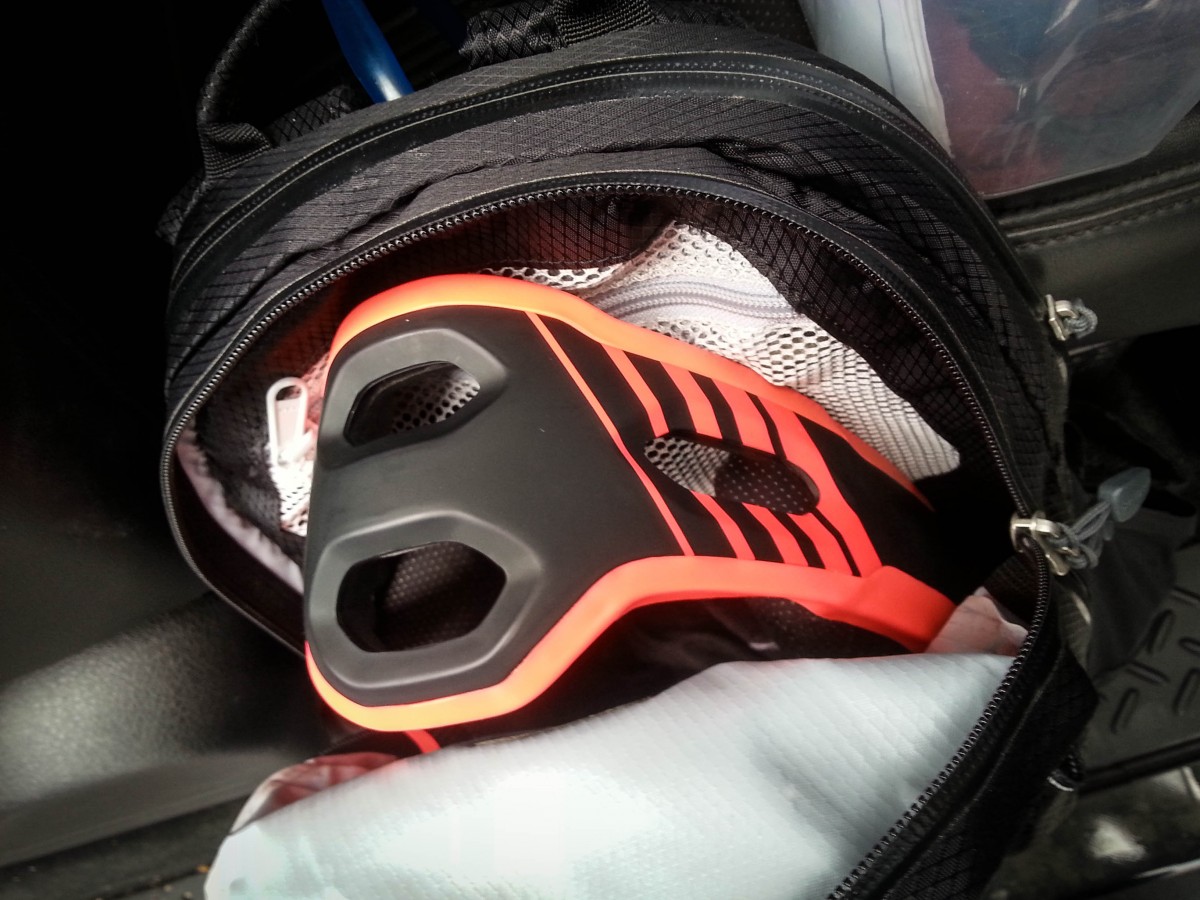When I first I heard of the Bell Super 2R mountain bike helmet I honestly thought the idea of having a removable chin bar sounded unnecessary, if not ridiculous. I know many readers already think that, and in fact some of you may recall the old Giro Switchblade, which still has a cult following despite the popular opinion that it was uncool and unsafe. The 2R is the opposite of the Switchblade, and may in fact change the way the entire mountain bike world views helmets. As someone who likes to rally hard, and often clumsily, I am a convert to Bell’s bold gamble that the helmet needs reinvention. And, given the global surge of enduro racing, other manufacturers are already capitalizing on this ideology to give consumers added protection from nasty spills.


This review would be incomplete without mentioning a guy named Eddie, who I met last fall at a trailhead and noticed that he had a Bell Super 2R. Still very unconvinced about the utility of this product, I asked him what prompted him to purchase one. Eddie told me that a few months earlier, on Amasa Back in Moab, he fell and knocked several front teeth out, which could happen to anyone… right? A year later, Eddie was cranking hard down the very technical Dakota Ridge, flipped over, and repeated the dental insult. It could happen to anyone… uh, never mind. After spending a small fortune on teeth, his friend rightfully ordered him to ride henceforth with a downhill helmet, which he did until he realized how hot and heavy they are for everyday use… and fortunately stumbled upon the 2R. Eddie has been saved by this helmet, and has been extremely happy with it. My criticisms eroded, and suddenly I could not wait to get my hands on one.
Unless you are riding the world’s most vanilla trails lined with marshmallows, the Bell Super 2R mountain bike is a versatile lid build for almost anyone, increasing safety, inspiring confidence, and pushing the limits of helmet technology in general.
[see_also id=”200029″][/see_also]
The Deets
- Adjustable Visor–this is a nice feature that allows for easy adjustment of the visor without much fuss. I found it very easy to put my enduro-approved goggles on the visor brow and out of my way for long climbs.
- Breakaway Screws–easily replace the visor if it divorces you in a fall.
- GoggleGuide Adjustable Visor System–an easy-to-use feature that allows you to wear goggles and put them on the helmet brow, under the visor, when you don’t need them.
- In-Mold Polycarbonate Shell–safety first!
- Integrated Breakaway Camera Mount–designed to protect your head, helmet, and fancy camera, the camera mount was designed to let go and roll away if you should topple on your head while filming

The breakaway camera mount is easily removable with velcro straps as well - Overbrow Ventilation–the helmet was designed to allow air under the brow, which works exceptionally well if you are wearing this helmet in winter.
- TAG™ Fit System
- Wraparound Chin Bar–the crown jewel of the 2R, this protects your mug.
- X-Static Padding
Instructional video from Bell:
Testing
This helmet was tested in Colorado, Utah, and Arizona during the fall and winter months. I did everything I could to wear it out… except for falling on my face. Test that yourself.

Adjustability: as with any bike helmet worth its weight, being able to adjust the fit on the fly is key. Bell could not have made things easier: with their reliable dial and TAG fit system, I was able to loosen up and cinch down this helmet if I needed to add a beanie or if I attached the chin bar and psychologically felt obligated to get the helmet as tight as possible.

Chin Bar: As I mentioned, my initial impressions of attaching and using a chin bar seemed dubious. I warmed up to the idea rather quickly, and to quote Eddie, “I feel naked riding without one now.” It is easy to stow the chin bar on the outside of, or even inside of, a relatively small pack. Even better, it only takes about 20 Mississippis to attach it, and even fewer to remove it. In the time it takes you to consume an energy gel at the top of a long climb, you can install that chin bar and significantly increase your facial protection for the obstreperous descent.

Certification/Safety: Although there are helmets specifically designed for downhill racing, Bell went above and beyond to certify the 2R with CE EN1078 and CPSC standards, and has invited critics to examine their theoretical and real-world testing dynamics, most notably documented in this recent viral video:
Even better, the helmet is ICEdot compatible (sold separately), which is an emergency notification system that can activate a user’s health information using a code PIN on the helmet. As long as you register the PIN, and you are wearing your helmet, EMS can get your health data in case of an emergency.

Weight: At 694 grams, this is a very light helmet for what it can protect you from, and far less than most downhill helmets.
Ventilation: 23 vents ensure that good air flow keeps your head cool, using the brow ports and the chin vents. It works a little too well in the winter. 🙂

[see_also id=”198642″][/see_also]
Things that some users may not like:
Nutrition access: If you’ve ever used a DH helmet, you already know that some of them make it difficult to slurp down a gel shot or take a sip of water. When riding lift-serviced downhill runs, however, you have plenty of time to remove your helmet on the lift and power up between runs. With the 2R, you are more likely to be riding trail or enduro, and if you use the chin bar all or most of the time, you may find it difficult to put anything in your mouth without muscling the helmet around on your head. It can be done, but it’s cumbersome if you drink from a hydration pack whilst riding technical terrain.

Noise: Overall the helmet is quiet, but using the chin bar amplifies the sound of your breathing. While not something you typically worry about with a traditional DH lid if you are mostly focused on clearing the next gap, the sound of your (loud) breathing may bother you if you wear the chin bar in undulating terrain and climb with it. Turn up the headphones, or get used to it.

Price: At $199 MSRP, this helmet isn’t cheap, but neither is a trip to the ER or replacing your front teeth. Also, it isn’t a full-on downhill helmet, and it was not designed to be. You should consider purchasing a beefier helmet if you frequently ride lift-served DH trails.


Bell - Super 3R/2R Chinbar
$56.25 Jans AD
Color: The helmet I tested was “infrared,” which is somewhere between a salmon and fuchsia color. Riders I know have complained that it looks nothing like the cherry apple red that Bell advertises, and they are correct. Infrared certainly attracts attention, but I agree with the riders who would like to see a standard red as well. The good news is that the 2R comes in several other color schemes, many that mimic the patterns of the popular Bell Super.

Bottom Line
Before starting this review, I was stolidly skeptical. Using this helmet, however, has not only convinced me that the 2R is a good idea, it has made me rethink what style of helmet I need for different trails. Most of the time I can get by with a traditional lid, but having a chin bar provides another layer of safety for technical trails. The good news is, the 2R provides the best of both worlds for enduro and trail riding, and I don’t think I can personally go back. Eddie agrees.
Other recent reviews have hinted that this product as a “game-changer,” a phrase that is often overused. But in this case, I agree. The 2R is reshaping how riders think about helmets and safety, and that is a good thing. The 2R has since been released with a MIPS version for only $229, which is an even better idea.
The 2R helmet gets a lot of attention on the trail and starts a lot of conversations, and more surprising, most people comment on how cool it looks. If you ride chunky, techy trails and like to charge hard, the 2R should be on your wish list.
Thanks to Bell for sending the Bell Super 2R over for review!
























2 Comments
Apr 30, 2015
The Bell Super 2R Mips is what I bought (comes in Mips and non Mips versions) and my only complaint is there is no extra pads for shimming and no extra camera mount so when these need replacement or you need extra padding you will have purchase it..
All that comes in the box is the helmet bag, owners manual, visor rider ID and then 2 little rubbers which are for fill in plates for the side chin bar holes when not in use. I guess they are for when you only want to use it as an open face for the duration.. (would have rather had the extra foam kit)
I bought the Chili Red and I have to confess it is more like fluorescent orange than red.. Super bright..
The gang i rode with last night commented on they liked the color.. Me not so much.. Pink, Royal Purple, royal blue, Red.. would have worked" More better".. I certainly will be easy to spot in any crowd and maybe that is the whole problem.. I already stick out in the crowd..
I've ridden with it a few times and I have to say it fits very nicely for a narrow headed person.. The sides of my head are basically completely flat.. And usually end up with a rocker from side to side and pressure points on both rear upper quadrants of my skull after extended wear..
My head measures 22 3/4" and I ordered a Medium.. Up till now I have just suffered with ill fitting half buckets so the fit on this is pretty nice.....
For Girls/women with long hair and want to hang a pony tail there is okay room between the helmet and adjustment know if you bunch it down low..
There was an interior foam bit which I had to move forwards and down but it actually looks like it might be there just for that purpose as the cutouts in the foam matched the helmets interior. and this removed the intial head pressure points...
I like that it fully covers my cranium in the back and as an open face helmet it works great.. I haven't had the opportunity to try out the full face function yet as it's still colder here and i suffer from the curse of the constantly running, dripping nose till it hits about 70F..
I will be trying it more and more as it is my go to helmet now since it fits so much better than my bowl Giro which I have always tolerated just because I have to wear a helmet..
I do own and Use a Rockgardin full face during the really cold winters for extra wind protection but it is a full face seemingly dedicated for the down hill or fast flowy segment with higher wind speeds since you are really moving. This breathes better than the Rockgardin as there are larger and more open holes..
Knowing what i know now I would buy this in the white, size medium.. Seems well made..
Apr 30, 2015